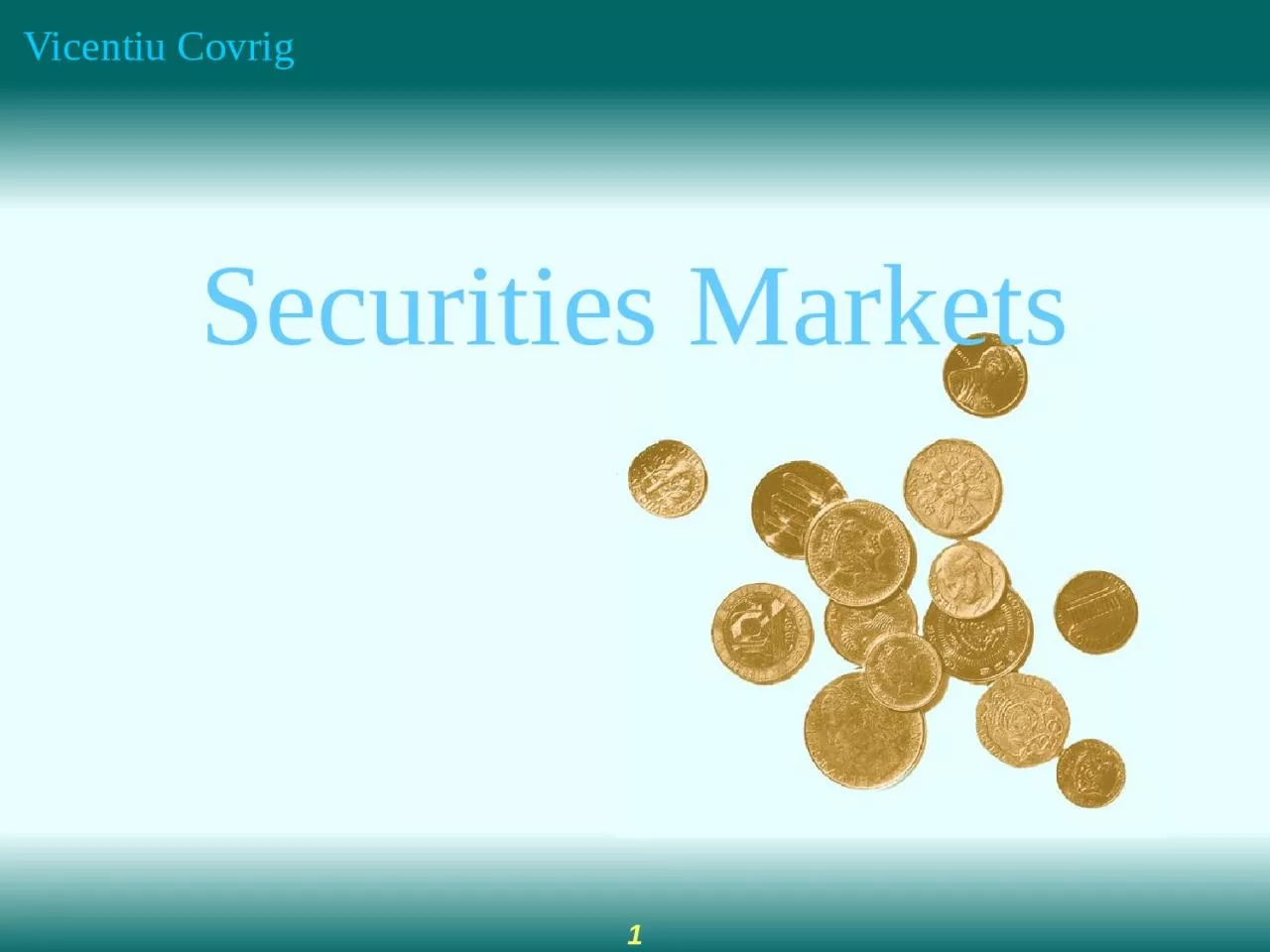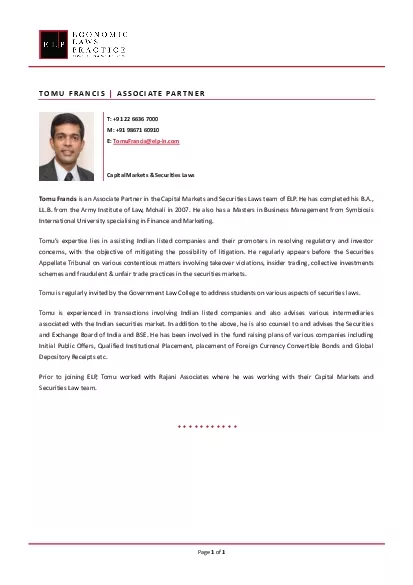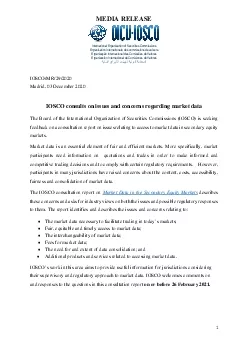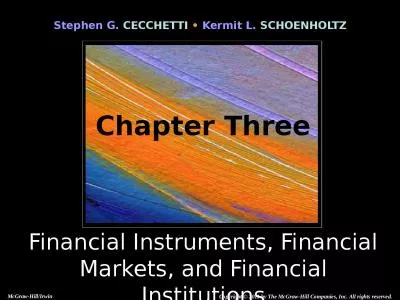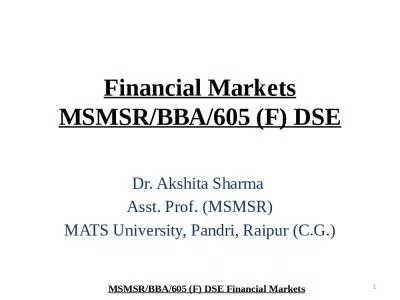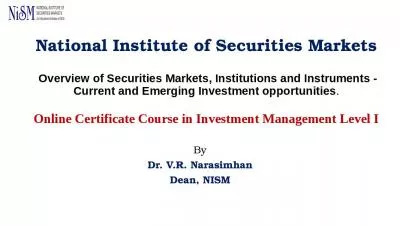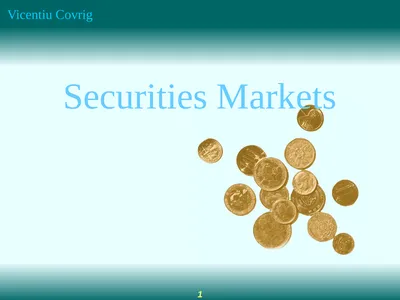PPT-Securities Markets The Role of Financial Markets
Author : udeline | Published Date : 2023-11-03
Money markets debt type securities with maturity up to one year Capital Markets everything else Stock Markets Bonds Fixed Income Markets bonds loans notes securitizations
Presentation Embed Code
Download Presentation
Download Presentation The PPT/PDF document "Securities Markets The Role of Financial..." is the property of its rightful owner. Permission is granted to download and print the materials on this website for personal, non-commercial use only, and to display it on your personal computer provided you do not modify the materials and that you retain all copyright notices contained in the materials. By downloading content from our website, you accept the terms of this agreement.
Securities Markets The Role of Financial Markets: Transcript
Money markets debt type securities with maturity up to one year Capital Markets everything else Stock Markets Bonds Fixed Income Markets bonds loans notes securitizations Financial Derivatives Futures Options Swaps. Bodie, Kane and Marcus. Essentials of Investments . 9. th. Global Edition. . 1. 1.1 Real versus Financial Assets. Nature of Investment. Reduce current consumption for greater future consumption. Real Assets. Borrowers . Spenders. Households. Business firms. Governments. Foreigners. FinancialMarkets. Indirect Finance. Direct Finance. Funds. Funds. Funds. Financial Intermediaries. Lenders. Savers. Households. In this section, you will learn:. about securities, such as stocks and bonds. the economic functions of financial markets. how asymmetric information can disrupt financial markets. how banks compare to financial markets, and how they combat problems from asymmetric information. La gamme de thé MORPHEE vise toute générations recherchant le sommeil paisible tant désiré et non procuré par tout types de médicaments. Essentiellement composé de feuille de morphine, ce thé vous assurera d’un rétablissement digne d’un voyage sur . Page 1of 1ASSOCIATE PARTNERT 91 22 6636 7000M 91 98671 60910E TomuFranciselp-incomCapital Markets Securities Laws Tomu Francisis an Associate Partnerinthe Capital Markets and Securities Laws team of International Organization of Securities CommissionsOrganisation internationale des commissions de valeursOrganizao Internacional das Comisses de Valores1 IOSCO/MR//2020describesThemarket data necess kindly visit us at www.nexancourse.com. Prepare your certification exams with real time Certification Questions & Answers verified by experienced professionals! We make your certification journey easier as we provide you learning materials to help you to pass your exams from the first try. The international financial system exists to facilitate the design, sale, and exchange of a broad set of contracts with a very specific set of characteristics.. We obtain financial resources through this system:. Financial markets . : . is a broad term describing any market place where trading of securities including equities, bonds, currencies and derivatives occurs.. Financial . markets can be distinguished along two major dimensions. Dr. Akshita Sharma . Asst. Prof. (MSMSR). MATS University, Pandri, Raipur (C.G.). 1. MSMSR/BBA/605 (F) DSE Financial Markets. Text Books. 1. Financial institutions and Markets : L.M.Bhole. 2. Indian Securities market: Hooda.R.P. . Overview of Securities Markets, Institutions and Instruments - Current and Emerging Investment opportunities. .. Online Certificate Course in Investment Management Level I. By. Dr. V.R. Narasimhan. Khurshid. Ahmad,. Chair of Computer Science. Trinity College, Dublin, IRELAND. San Francisco, 8 November 2011. Herd . behaviour. . causes individuals to over value public information and undervalue private information.. sub-sectors. Pierre Sola. European Central Bank. Workshop on Financial Accounts. 9 to 11 October 2023 - Brussels. This document should not be reported as representing the views of the European Central Bank (ECB). The views expressed are those of... Securities Markets The Role of Financial Markets Money markets: debt type securities with maturity up to one year Capital Markets: everything else Stock Markets Bonds (Fixed Income Markets): bonds, loans, notes, securitizations Financial
Download Document
Here is the link to download the presentation.
"Securities Markets The Role of Financial Markets"The content belongs to its owner. You may download and print it for personal use, without modification, and keep all copyright notices. By downloading, you agree to these terms.
Related Documents

